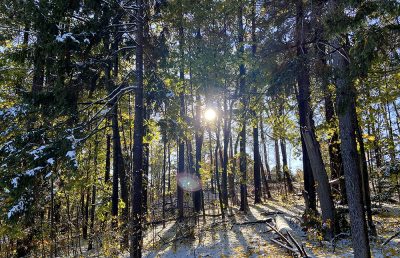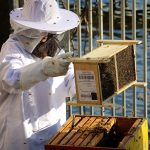Mayor Marty Walsh announced the two firms selected to head Boston’s first Urban Forest Plan — a 20-year project focused on protecting the city’s trees, addressing climate change and improving the overall lives of Boston residents — Wednesday.

The Urban Forest Plan is a joint effort designed to address the growing threat of climate change in the city and its disproportionate effects on local communities, according to a Wednesday press release by the Boston Parks and Recreation Department.
Boston landscape architecture firm Stoss Landscape Urbanism and Kentucky-based forestry consultant Urban Canopy Works were selected by the City to head the plan, the press release stated.
The planning phase is expected to start this spring and will be completed in about a year. During this time, the project will be open for public feedback in the fall.
The Urban Forest Plan includes a community advisory group and an interdepartmental working group to better understand concerns brought up by Boston residents, according to the press release. The City also plans to continue its Climate Ready Boston efforts by working closely with communities impacted by rising sea levels and extreme temperatures.
“Mayor Walsh and others have talked about how this is their first Urban Forest Plan, and this is in step really with communities all across the nation that are now undergoing a heightened awareness of trees and green spaces in their own municipalities,” said Rick Harper, extension associate professor of urban forestry at the University of Massachusetts Amherst.
Urban forestry is the management of trees and green spaces within cities or densely populated areas, Harper said. Urban parks, street trees, landscaped boulevards and gardens all make up Boston’s urban forest.
He added that the concept of urban forestry originates from the 1960s, when University of Toronto professor Erik Jorgensen studied diseases among the city’s elm trees.
“The art and the science of growing trees in an urban environment is very real,” Harper said. “It’s very challenging. Forested trees don’t contend with road salt and construction injury and concrete and walkways and roads and all of those things and pollution.”
The City budgeted $500,000 for the plan’s roll-out and supports the planting of an additional 1,000 trees throughout Boston — doubling the typical yearly plant.
Doug Pizzi, executive director of Massachusetts Conservation Voters, said the City had previous initiatives focused on environmental protection, but they were ultimately unsuccessful.
“It’s nice that they’re actually putting together a plan,” Pizzi said. “There have been other efforts in the past to plant trees in Boston and to protect trees in Boston that didn’t really take off because it was never committed to a plan.”
The Urban Forest Plan will emphasize canopy preservation — protecting layers of leaves, branches and stems in the city’s trees that collect rainfall, help regulate temperature and provide shelter for animals.
Trees in urban landscapes usually have smaller canopies and shorter life spans due to external stressors such as heightened pollution, according to the Center for Watershed Protection.
David Meshoulam, executive director and co-founder of Boston conservation group Speak for the Trees, said the growth and maintenance of the city’s canopy is critical in the face of climate change.
“In Boston, we’re going to be facing higher sea levels, we’re going to be facing increased heat and pollution and trees are really critical for mitigating some of those issues,” he said. “They cool our streets in the summer, they filter air pollution, they absorb stormwater runoff.”
Meshoulam said areas with a lack of trees can impose environmental challenges for locals. He added that chronic diseases can be worsened by living in a highly polluted area.
“People are sicker from asthma, they have to maybe turn on the air conditioning more often in the summer, or having worse heatstroke, their basements are flooding more often,” Meshoulam said. “These are not only economic issues, but public health issues, and they can be a matter of life and death.”
The City’s plan aims to address disparities in the tree canopy by targeting communities that have been disproportionately impacted by environmental stressors, according to the Wednesday release.
“Environmental degradation seems to happen a lot in places where the folks who live there are least able to combat it, and that’s just kind of an issue across the board,” Pizzi said. “The fact that there’s an environmental justice component to this plan is very encouraging.”
A previous version of this story stated that David Meshoulam attributed malnutrition to increased pollution. The story has been updated to remove this error.














